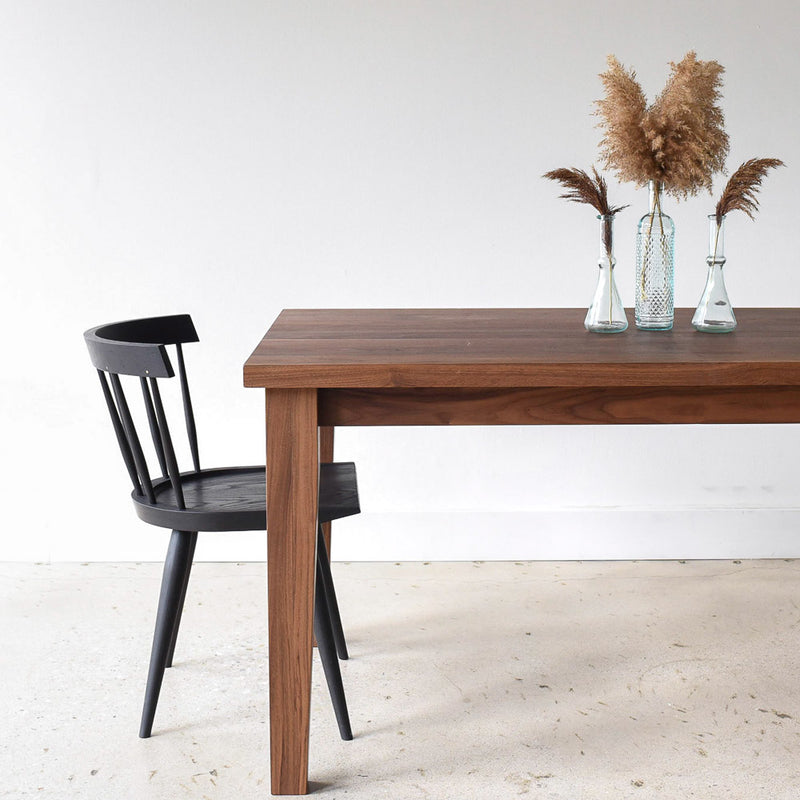Secret Variables to Keep in Mind for Dining Table Legs Wood Choices
When choosing timber for eating table legs, several crucial variables warrant cautious factor to consider to ensure both performance and visual charm. The selection of wood type, characterized by its sturdiness and one-of-a-kind grain patterns, plays a pivotal role in the overall style and durability of the item.
Timber Kind and Features
When picking timber for dining table legs, it is vital to understand the distinct qualities of various timber kinds. Various woods offer distinct advantages and disadvantages, influencing both the toughness and visual allure of the finished product.
Hardwoods, such as cherry, maple, and oak, are commonly favored for their toughness and resistance to use. Oak, understood for its outstanding longevity, additionally includes a popular grain that can include personality to the table. Maple uses a smooth surface and is less susceptible to warping, making it a trustworthy option for functional furniture. Cherry wood, with its abundant color that deepens over time, supplies a lavish appearance however might call for even more maintenance to prevent scratches.
On the other hand, softwoods like pine and fir are more cost effective and much easier to collaborate with, yet they are much less resilient than woods. Pine is light-weight and includes a warm, rustic look, making it a favored selection for casual eating setups. It is much more susceptible to damages and scrapes.
Recognizing these qualities will certainly aid in making an educated choice to guarantee the legs of the table satisfy both practical and visual requirements.
Grain Patterns and Aesthetics
The timber's grain is not just an aesthetic characteristic; it imparts a distinct personality and appeal to each item. Various timber types show unique grain patterns, varying from the straight lines of maple to the detailed swirls of oak and the striking figure of walnut.
Moreover, the orientation and range of the grain can influence the regarded dimension and style of the table. For example, bigger, extra noticable grains might provide a strong, remarkable effect, while finer, subtler grains can create an improved, underrated appearance. In addition, the ending up procedure can further enhance these patterns, stressing the all-natural appeal of the wood and bringing out abundant colors.
Eventually, the choice of grain pattern must integrate with other layout aspects, such as the tabletop and bordering furniture, making certain a natural visual that raises the dining experience. Thoughtful selection of wood grain not just contributes to the table's appeal but additionally shows the proprietor's preference and style.
Longevity and Strength
The toughness and toughness of eating table legs are paramount considerations for guaranteeing durability and security in any type of eating room. Choosing the ideal wood is crucial, as various species exhibit differing levels of strength.

Inevitably, purchasing high-grade wood and robust construction techniques will produce a table that stands the examination of time, while supplying a dependable foundation for many dishes shared among family and close friends. Prioritizing longevity and toughness ensures that your dining table remains functional and aesthetically pleasing for years to find.
Maintenance and Care
Correct maintenance and Find Out More care are essential for maintaining the longevity and strength of dining table legs made from wood. Routine cleansing is vital; using a soft, damp cloth guarantees that dust and particles do not collect, which can bring about scrapes and monotony. It is recommended to avoid harsh chemicals or unpleasant products that could harm the surface.
Additionally, using an appropriate wood polish or wax periodically can aid keep the sheen and protect the timber from wetness and spills. It is crucial to follow the supplier's recommendations pertaining to the type of item to utilize, as particular surfaces might react detrimentally to particular chemicals.
Moisture and temperature changes can also impact wooden table legs, creating them to warp or crack. It's ideal to place the table far from straight sunshine and warm sources. Resolving these quickly can stop more damages. if the table legs have any scrapes or damages.
Finally, periodically inspecting the joints and screws for tightness is vital to preserve architectural honesty (Dining Table Legs Wood). By sticking to these upkeep practices, house owners can guarantee their wood dining table legs stay appealing and functional for many years ahead
Ecological Factors To Consider
When selecting wood for dining table legs, it's necessary to take ecological considerations into account. The sourcing and sustainability of timber are paramount in lessening eco-friendly impact. Choosing timber from licensed resources, such as those recommended by the Forest Stewardship Council (FSC), guarantees that the wood is gathered basics sensibly, advertising woodland preservation and biodiversity.

Furthermore, local sourcing of timber decreases transportation emissions, supporting neighborhood economies while minimizing ecological impact. It is also a good idea to be knowledgeable about the timber's treatment and ending up procedures, as particular chemicals can be unsafe to both human wellness and the atmosphere. By focusing on lasting wood choices, customers can add to ecological preservation while taking pleasure in the longevity and elegance of their table legs.
Final Thought
In conclusion, selecting wood for eating table legs requires cautious consideration of numerous factors, consisting of wood kinds, grain patterns, and resilience. Upkeep needs and environmental sustainability more impact look at more info wood choices, stressing the significance of sourcing from certified or recovered materials.
When picking wood for eating table legs, several vital variables warrant mindful factor to consider to make sure both capability and aesthetic charm.Appropriate maintenance and treatment are important for protecting the longevity and stamina of eating table legs made from timber.When choosing timber for dining table legs, it's important to take environmental considerations right into account. By prioritizing sustainable wood options, consumers can contribute to environmental preservation while appreciating the longevity and charm of their eating table legs.
In conclusion, picking timber for dining table legs requires mindful factor to consider of various aspects, including wood types, grain patterns, and toughness. Dining Table Legs Wood.